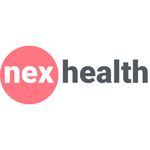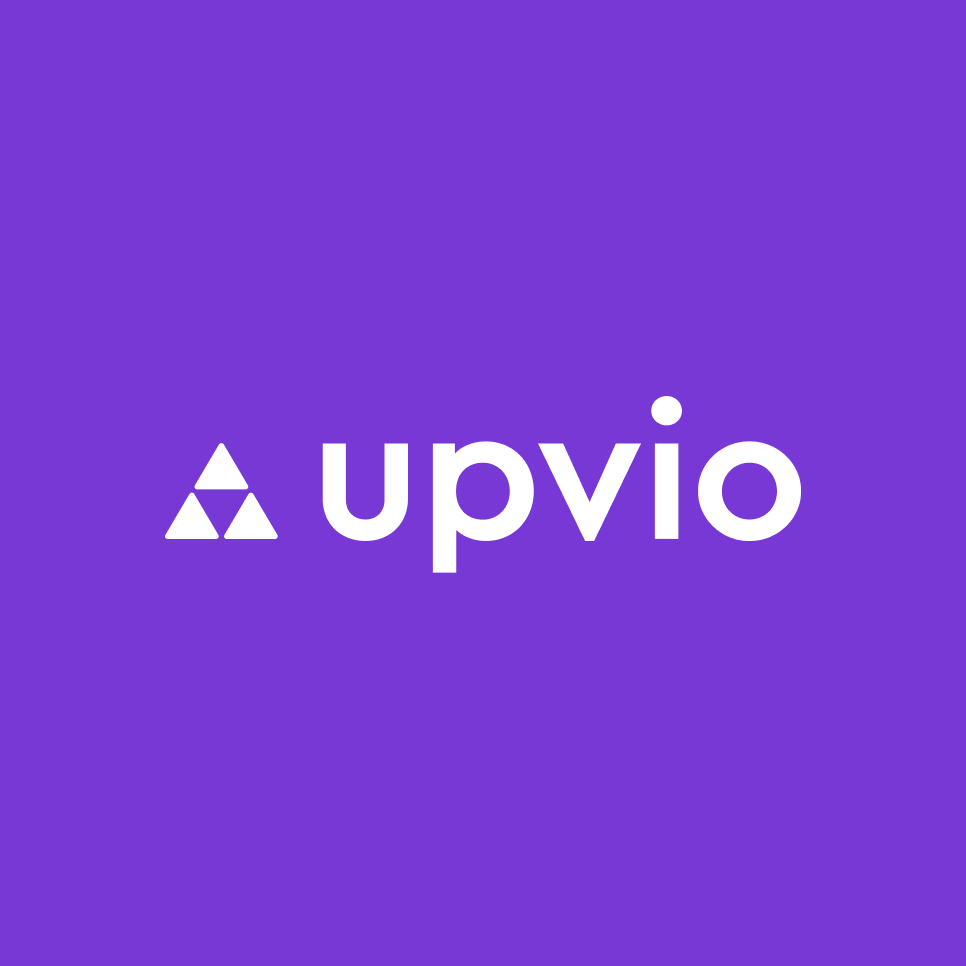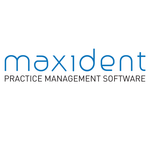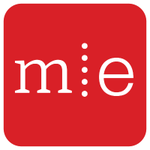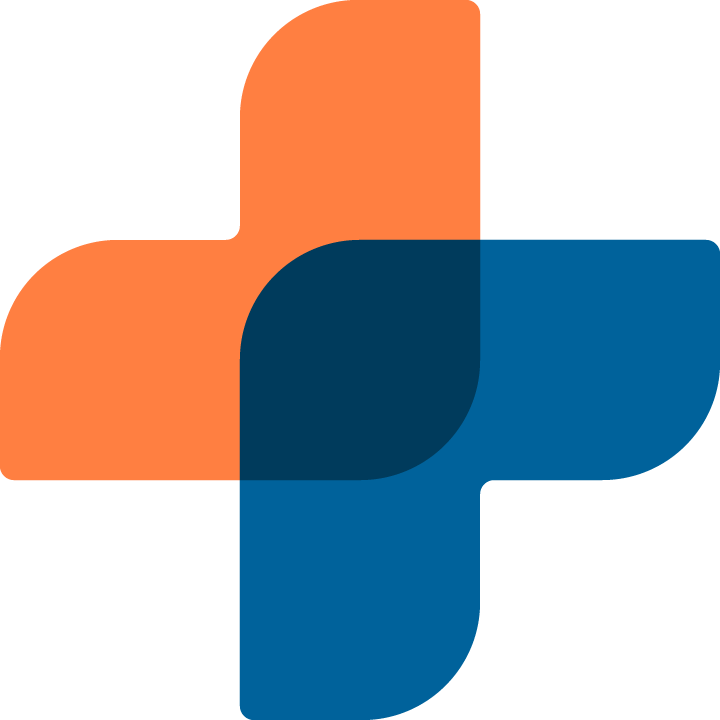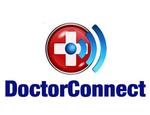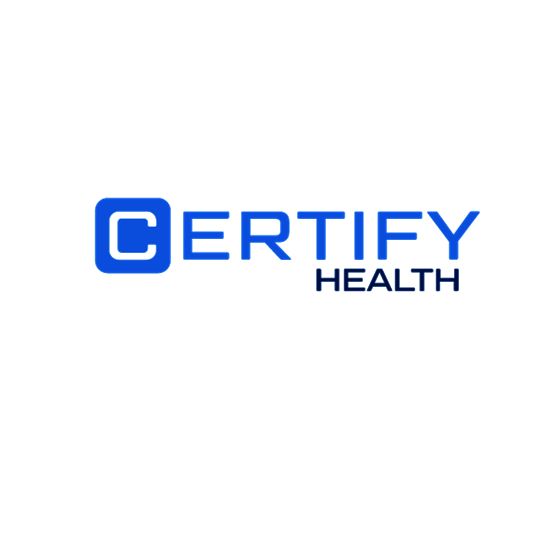Yes, most patient scheduling software can be used on more than one device and platform. You may use it on a desktop computer, laptop, tablet, or smartphone, and it works with Windows, Mac, iOS, and Android operating systems. This makes it easy and flexible to manage patient appointments and calendars, no matter what device or platform you are using.
List of Best Patient Scheduling Software
NexHealth is a patient experience platform that streamlines everything from scheduling and communication to payments. Built to seamlessly integrate with electronic health record systems, it streamlines practice operations and boosts patient satisfact...Read More NexHealth
Upvio is an innovative healthcare technology software developed to empower medical professionals with cutting-edge solutions to enhance hybrid, virtual, and remote care. Our advanced software is specifically designed to support the needs of practitio...Read More Upvio
TimeTap is a appointment scheduling software that streamlines your administrative tasks. Our platform offers automated messaging, customizable booking forms, and calendar synchronization, making it a must-have for businesses, schools, and medical pra...Read More TimeTap
Petal Patient Self-Scheduling - an innovative tool that empowers patients to effortlessly schedule their own medical appointments through an online platform. This reliable solution streamlines the booking process, reducing administrative workload for...Read More Petal Patient Self-Scheduling
Doctor Qube is a medical software for streamlining clinic operations and enhancing patient care. With its customizable appointment scheduling, real-time updates, and seamless patient management features, Doctor Qube increases efficiency and satisfact...Read More Doctor Qube
MaxiDent – is the software solution designed for dental practices. Perfect for both single and multi-locations, MaxiDent streamlines your workflow with its advanced features like digital imaging, patient scheduling, clinical charting, and bill...Read More Maxident
CareStack solution for your dental practice. Our intuitive software optimizes operations, enhances patient engagement, and boosts efficiency. With features like online scheduling, smooth payment integration, and instant data analysis, CareStack empow...Read More CareStack
MedEvolve is a leading provider of revenue cycle management and practice management solutions. Our innovative technology, Effective Intelligence, uses automation and analytics to help healthcare organizations streamline their operations and improve p...Read More MedEvolve
RXNT Practice Management is a cloud-based solution designed for medical practices. Our all-in-one platform streamlines your billing process, tracks claims, generates detailed reports, schedules appointments, and enables patient engagement through our...Read More RXNT Practice Management
DoctorConnect, the groundbreaking software revolutionizing the healthcare industry. With its advanced capabilities, DoctorConnect streamlines communication and empowers patients, leading to improved medical practices and better outcomes. Through its...Read More DoctorConnect
Acuity Scheduling is a leading Appointment Management software that streamlines the booking process for clients. Featuring an intuitive calendar display and real-time availability of time slots, clients can effortlessly schedule or cancel appointment...Read More Acuity Scheduling
TigerConnect is a leading healthcare platform that provides innovative clinical communication and collaboration solutions to optimize patient outcomes. Our cloud-based technology enables secure real-time communication among healthcare teams, improvin...Read More TigerConnect
Certify Health is a solution for effortless patient registration. Our innovative 24/7 self-scheduling tool streamlines the process and maximizes productivity for both staff and patients. Say farewell to lengthy wait times and welcome a stress-free he...Read More Certify Health
Learn More About Patient Scheduling Software
- What Is Patient Scheduling Software?
- What Are the Recent Trends In Patient Scheduling Software?
- Benefits Of Using Patient Scheduling Software
- Important Factors To Consider While Purchasing Patient Scheduling Software?
- What Are The Key Features To Look For In Patient Scheduling Software?
- Why Do Businesses Need Patient Scheduling Software?
- How Much Time Is Required To Implement Patient Scheduling Software?
- What Is the Level Of Customization Available In Patient Scheduling Software?
- Which Industries Can Benefit The Most From Patient Scheduling Software?
- Conclusion
What Is Patient Scheduling Software?
Patient scheduling software is a tech-based solution that makes it easier for healthcare organizations to plan appointments. It takes care of everything, from making appointments to changing them, sending reminders, and handling cancellations. This program takes the role of the old-fashioned ways of making appointments, which can take a long time and be full of mistakes. The fundamental goal of patient scheduling software is to make scheduling easier and better for both patients and healthcare professionals. It has a simple and easy-to-use design that lets patients make appointments online when it's convenient for them.
It also gives healthcare workers a central place to manage and keep track of appointments, which lowers the risk of making mistakes. The ability to work with electronic health records (EHRs) is one of the most important things about this software. This feature not only gets rid of the need to enter data by hand, but it also lets healthcare providers see patient information and medical history in real time, which makes patient care better overall. Another key feature of patient scheduling software is that it may send out automatic reminders for appointments.
This function helps keep patients from missing appointments, which can have a big effect on the income of healthcare facilities. It also makes it easy to change or cancel appointments, which makes sure that all available time periods are used to their fullest. This software not only makes scheduling easier, but it also has analytics and reporting features that show how well the facility is doing with scheduling and where it may do better. When buying patient scheduling software, people should think about things like how easy it is to use, how well it works with other software, how customizable it is, and how secure it is.
What Are the Recent Trends In Patient Scheduling Software?
Introduction: Patient scheduling software is an important tool in healthcare since it helps medical practitioners keep track of their appointments and plan visits for patients. The market for patient scheduling software has changed and improved a lot over the years because of new technologies and changes in how people shop.
This part will talk about the latest trends in patient scheduling software that you should think about while picking the best software for your clinic.
1. Cloud-based Software: One of the biggest changes in patient scheduling software is that more and more of it is moving to the cloud. Cloud-based software lets healthcare providers access their scheduling system from anywhere, which is helpful because more and more people are using mobile devices and telemedicine. This makes it easier for healthcare providers to work together, cuts down on paperwork, and makes the patient experience better.
2. Linking with Electronic Health Records (EHR): Another trend in patient scheduling software is linking with electronic health records (EHR). This makes it easier to coordinate scheduling and patient information, which speeds up the process and cuts down on mistakes. It also lets you get updates and access patient information in real time, which makes care better and lowers the risk of double booking.
3. AI and machine learning: AI and machine learning are changing the way patients are scheduled. These technology can look at patient data and figure out when appointments are needed, making the schedule better for both patients and healthcare providers. Chatbots powered by AI may also help patients make appointments, which makes things easier for staff and makes the patient experience better.
4. Telehealth capabilities: The current global pandemic has sped up the use of telehealth services, and patient scheduling software has also changed to keep up with this trend. Many software programs now have telehealth features, which make it easy for patients to set up and go to virtual appointments. This not only makes things easier for individuals, but it also makes it easier for more people to get health care.
5. Patients booking their own appointments: More and more patients are making their own appointments, and many patient scheduling software systems now let them do this. Patients can now make appointments directly through an online portal or mobile app. This makes things easier for front desk workers and gives patients greater control over their health care.
Benefits Of Using Patient Scheduling Software
All kinds of healthcare facilities, clinics, and practices can benefit from using patient scheduling software. This software makes scheduling patients easier, faster, and more accurate.
Here are some important reasons to use patient scheduling software:
1. Better experience for patients: Patients can make appointments online with patient scheduling software whenever it works for them. They don't have to wait on hold or make a long phone call anymore. Patients can make appointments, check availability, and get reminders by email or text with just a few clicks. This makes things better and easier for patients.
2. Efficient appointment scheduling: Making appointments by hand can take a long time and make mistakes. This procedure is automated using patient scheduling software, which lets personnel rapidly and properly arrange appointments without the risk of duplicate booking or missing appointments. This not only saves time, but it also makes the scheduling process work better overall.
3. More productive personnel: Automating the appointment scheduling process lets staff focus on other critical things like taking care of patients and doing administrative work. This makes people more productive and helps them better handle their task.
4. Fewer missed appointments: When people don't show up for their appointments, it can have a big effect on a healthcare facility's income. Automated appointment reminders can be sent via patient scheduling software, which lowers the risk of people not showing up. This helps with better scheduling and makes sure that the facility is always occupied.
5. Linking with electronic health records (EHR): A lot of patient scheduling software can link with EHR, which makes it easy for healthcare providers to get to patient records, see appointment history, and set up follow-up appointments. This speeds up the whole process, which makes treatment better for patients and staff.
6. Customizable features: Patient scheduling software has features that may be changed to fit the demands of each healthcare organization. This involves choosing the types of appointments, making appointments that happen on a regular basis, and sending reminders for follow-up appointments. These features make the scheduling process more personalized and efficient.
7. Analyzing and reporting data: Patient scheduling software gives you information about patients who don't show up, cancel, or make appointments. You may utilize this information to make scheduling better, cut down on no-shows, and get the most out of your workforce.
Important Factors To Consider While Purchasing Patient Scheduling Software?
There are a few crucial things to think about before buying patient scheduling software to make sure you make a good choice.
Here are some important things to think about while choosing the best patient scheduling software for your medical office:
1. How easy it is to use: One of the most important things to think about is how easy the software is to use. In a hectic hospital setting, staff and patients both need a system that is easy to understand and use. Look for software that is easy to use and has a clean interface. You might also want to ask for a demo or trial version to see how well it works.
2. Compatibility with Current Systems: It's important to pick patient scheduling software that works well with the systems you already have. This will save time and keep any problems with moving data from happening. Make that the program works with your billing software, electronic health record (EHR) system, and other important tools.
3. Customization Options: Every healthcare facility has different demands and ways of doing things, so it's important to select software that can be tailored to meet those needs. Look for ways to add custom fields, templates, and workflows to make the product operate better for you.
4. Features for Managing Appointments: The main job of patient scheduling software is to handle appointments well. To make the appointment experience better for both staff and patients, think about adding features like online booking, automated reminders, and managing the waitlist.
5. Safety and Compliance: In healthcare, it's very important to keep patient data safe, so be sure the software you purchase follows data privacy laws like HIPAA. To make sure that patient information is safe and private, look for features like secure data storage, access restriction, and an audit trail.
6. Mobile Compatibility: As mobile technology becomes more popular, it's important to choose software that has a mobile app or a web portal that works on mobile devices. This lets personnel see and change appointments from anywhere, at any time, which makes scheduling easier and faster.
7. Technical Support and Training: Like with any new software, both staff and patients may need to learn how to use it. To make sure the implementation goes smoothly and any problems that come up are fixed, look for software vendors that give full training and continuous technical support.
What Are The Key Features To Look For In Patient Scheduling Software?
Managing patient schedules well is very important for giving good treatment in the healthcare field. This is where patient scheduling software comes in. It makes it easier to make appointments and makes sure that patients go smoothly through the institution. But how can you know which patient scheduling software is best for your clinic when there are so many choices on the market?
Here are the most important things to think about so you can make an informed choice:
1. Customizable Appointment Booking: Look for software that lets you change the way you book appointments to fit the needs of your firm. This could include making sure that you are available dependent on the type of appointment, where it is, and who you are.
2. Multiple Ways to Schedule: The software should let patients make appointments in more than one way, like online, over the phone, or in person. This will make it easier for patients who like different ways to schedule appointments and make the process go more smoothly.
3. Reminder and Notification System: A decent scheduling program will have a built-in system that sends automated reminders to patients about their future appointments. This cuts down on no-shows and makes patients happier.
4. Integration with EMR/EHR: For accurate patient information and smooth data transmission, it is important for the system to work with electronic medical records (EMR) or electronic health records (EHR). It gets rid of the need to enter data by hand and lowers the risk of mistakes.
5. Managing the waitlist: Patients often cancel or change their appointments, which might leave gaps in the calendar. You can fill these gaps quickly and make the most of the schedule with patient scheduling software that includes waitlist management.
6. Analytics and Reporting: Find software that has good analytics and reporting tools. This can help you understand how patients move through your office, how appointments are scheduled, and other important information that can help you make smart choices to make things go more smoothly.
7. Security and HIPAA Compliance: Protecting patient data is very important in the healthcare field. Make sure the software for scheduling patients follows HIPAA rules and has strong security features to keep private patient information safe.
8. Easy to Use Interface: Software that is easy to use makes it easier for both staff and patients to get about. Find software that has a clear and easy-to-use interface. This will make it easier to keep track of appointments and timetables.
9. Mobile Compatibility: As more and more people use smartphones, it's important to have patient scheduling software that works on mobile devices. Patients will be able to make appointments, get notifications, and use other features while on the road.
10. Customer assistance: Finally, think about the customer assistance that the software company offers. They should offer a support crew that is quick to respond and helpful with any questions or problems you may have.
Why Do Businesses Need Patient Scheduling Software?
Businesses in the healthcare field need patient scheduling software. It helps healthcare practitioners keep track of their patients' appointments more easily, which cuts down on wait times and makes the whole patient experience better. But why do businesses really need this software?
Let's look at the benefits in more detail:
1. Makes managing appointments easier: Old-fashioned ways of making appointments, such writing them down or calling them, can take a lot of time and be wrong. This procedure is automated by patient scheduling software, which makes it simple for both patients and healthcare practitioners to set up and keep track of appointments.
2. Makes the best use of time: Healthcare practitioners can make the most use of their time and resources by being able to see all of their appointments at once. This stops people from reserving too many appointments or booking the same one again, which makes the practice run more smoothly and efficiently.
3. Lowers the number of no-shows and cancellations: No-shows and last-minute cancellations are two of the major problems in the healthcare sector. But patient scheduling software may give patients automatic reminders, which lowers the chance of missed appointments and lets physicians fill any spaces that are canceled.
4. Improves Patient Satisfaction: By eliminating the need for long wait times and manual appointment booking, patient scheduling software improves the overall patient experience. Patients may easily make appointments when it works for them, and clinicians are better able to give timely and high-quality care.
5. Improves communication: Most patient scheduling software include features like patient portals or messaging systems that make it easy and safe for physicians and patients to talk to each other. This makes it easier to coordinate care and makes patients happier.
6. More Money: Businesses can make more money by managing appointments well. Providers may make the most of their time and resources by cutting down on no-shows, which leads to more patients and more money.
How Much Time Is Required To Implement Patient Scheduling Software?
The time it takes to set up patient scheduling software can be different depending on the software and the needs of your clinic. But it usually takes a few weeks to a few months to fully set up and use the software in your office. The training and onboarding process is one of the most important things that might affect how long it takes to implement. To get the most out of the program, it's important to train and prepare your personnel appropriately.
Depending on how complicated the software is and how big your team is, this could take a few days or weeks. The process of moving data is another thing to think about. It may take some time to move all of your patient data and information to the new software if you are converting from an old scheduling system. Depending on how much data there is and how well the software works, this process could take a few days or weeks.
Customization and setup can also make the implementation take longer. It may take some time to set up and test different sorts of appointments, scheduling rules, and other needs for your firm. In general, the amount of time it takes to implement will also rely on how much help and support the software vendor gives. Some software firms give full onboarding and assistance, while others may only offer a few resources and expect the practice to do most of the work of setting up the program on its own.
What Is the Level Of Customization Available In Patient Scheduling Software?
When looking at patient scheduling software, one essential thing to think about is how much you can change it to fit your needs. This means that you can change the program to match the specific demands and processes of your healthcare facility. Different companies that make patient scheduling software offer different levels of flexibility. Some may have a one-size-fits-all approach, while others may be quite flexible and let you change things to suit your needs.
When deciding how much customisation is needed, keep these things in mind:
1. Templates and Layouts: Most scheduling software comes with pre-made templates for making appointments, but you should look for software that lets you change these templates to fit your needs. This includes being able to edit the layout, add or delete fields, and change the color scheme.
2. User Roles and Permissions: Not all staff members at a healthcare facility will have the same access and duties when it comes to making appointments. You should look for software that lets you define multiple user roles and give them certain permissions. This way, each user can only see and utilize the features and information that are important to their job.
3. sorts of Appointments and Rules: Depending on the healthcare services you offer, you may have several sorts of appointments that need to follow certain rules and guidelines. Check to see if the software you chose lets you make and change multiple sorts of appointments and establish rules and limits for each one.
4. Reminders and Notifications: It's very vital for patient scheduling to make sure that patients are reminded of their appointments in a timely and correct way. Find software that lets you change the structure, timing, and content of the reminders and notifications that are delivered to patients.
5. Working with Other Systems: Depending on how your healthcare facility already works, you may need the scheduling software to work with other systems, such electronic health records or billing systems. Make sure the program lets you change things so that it works well with your present systems and workflows.
Which Industries Can Benefit The Most From Patient Scheduling Software?
Technology keeps becoming better and better, and the healthcare industry is no exception. Healthcare institutions and patients have both greatly profited from using patient scheduling software. This software has become a must-have for many parts of the healthcare system since it makes scheduling appointments and managing patients easier. Patient scheduling software is mostly useful for clinics and hospitals. Scheduling appointments can be hard and take a lot of time when you have a lot of people to take care of.
But with patient scheduling software, healthcare providers can quickly set up, change, and cancel appointments. This not only saves time, but it also lowers the risk of human error, which makes patients happier overall. Patient scheduling software can also help specialist practices including dental, optometry, and physical therapy clinics. These practices typically have complicated scheduling needs, such having to make several appointments for the same patient or fit in several sorts of visits in a short amount of time.
These practices can easily manage their appointments and give patients a smooth and seamless experience thanks to the automated and configurable capabilities of patient scheduling software. Another group of businesses that can use patient scheduling software are home healthcare firms and nursing homes. Patient scheduling software can make it easier to manage and care for patients in various settings by letting you schedule home visits and coordinate in-home care services. The software's real-time availability feature also makes sure that care is delivered on time and efficiently, which makes patients happier.
There has also been a huge increase in demand for telemedicine and virtual care platforms, notably during the current worldwide epidemic. Patient scheduling software is very important in these fields since it helps manage virtual appointments and connects patients with healthcare practitioners in a safe way. This not only saves time, but it also lowers the danger of getting sick, which makes it a useful tool for these fields.
Conclusion
In conclusion, picking the correct patient scheduling software for your healthcare institution can make things run more smoothly, accurately, and make patients happier. Before you buy something, you should think about your individual needs and priorities, look into and compare other software options, and carefully consider the cost and features against the benefits it can offer.
Remember that the software needs to be easy to use, safe, and able to grow with your business. Also, think about how much customer assistance and training the vendor offers to make sure the deployment and use go smoothly. Your facility can make it easier to arrange appointments, cut down on no-shows, and improve overall operational performance with the proper patient scheduling software.
Patient Scheduling Software FAQ's
Can Patient Scheduling Software Be Accessed Across Multiple Devices And Platforms?
Is Patient Scheduling Software Future-Proof And Adaptable To Emerging Technologies Like AI, Blockchain Or IoT?
Patient scheduling software is always changing and adapting to new technologies like AI, blockchain, and the Internet of Things (IoT). AI can automate patient scheduling, which lowers the chance of human error and makes the process more efficient. Blockchain can make the software safer and more reliable. IoT can let patients and doctors talk to one other and get updates in real time. These technologies make sure the software will work in the future and can adapt to the needs of the healthcare business as they change.
Is There A Free Trial Offered To Assess Patient Scheduling Software Before Committing?
Yes, a lot of companies that make patient scheduling software give a free trial for a short time so that users can try it out before they buy it. This lets healthcare facilities try out the features and functions to see if they satisfy their needs. It also gives people a chance to get to know the program better and make an informed choice. It's always a good idea to use the free trial to make sure the software is right for your practice.
Does Patient Scheduling Software Offer Data Security Features And Meet Regulatory Compliance Standards?
Yes, most patient scheduling software has strong security features including encrypted storage, user authentication, and audits to make sure they follow HIPAA rules. These steps keep patient information private and safe. Additionally, a lot of software companies have to pass regular third-party audits to make sure they follow the rules set by groups like HIPAA and GDPR. This helps healthcare institutions stay in line with the law and keep patient data safe.
Can Patient Scheduling Software Integrate Seamlessly With Existing Tools And Platforms?
Yes, patient scheduling software can work with other products and platforms without any problems. Most modern software is made to work with a lot of different systems and can readily sync with technologies that are already in place, such electronic health records and practice management systems. This makes it easy to move data around and makes sure that all the information is correct and up to date. Some software companies also offer integration support and can help with the setup to make sure the process goes smoothly for the user.

